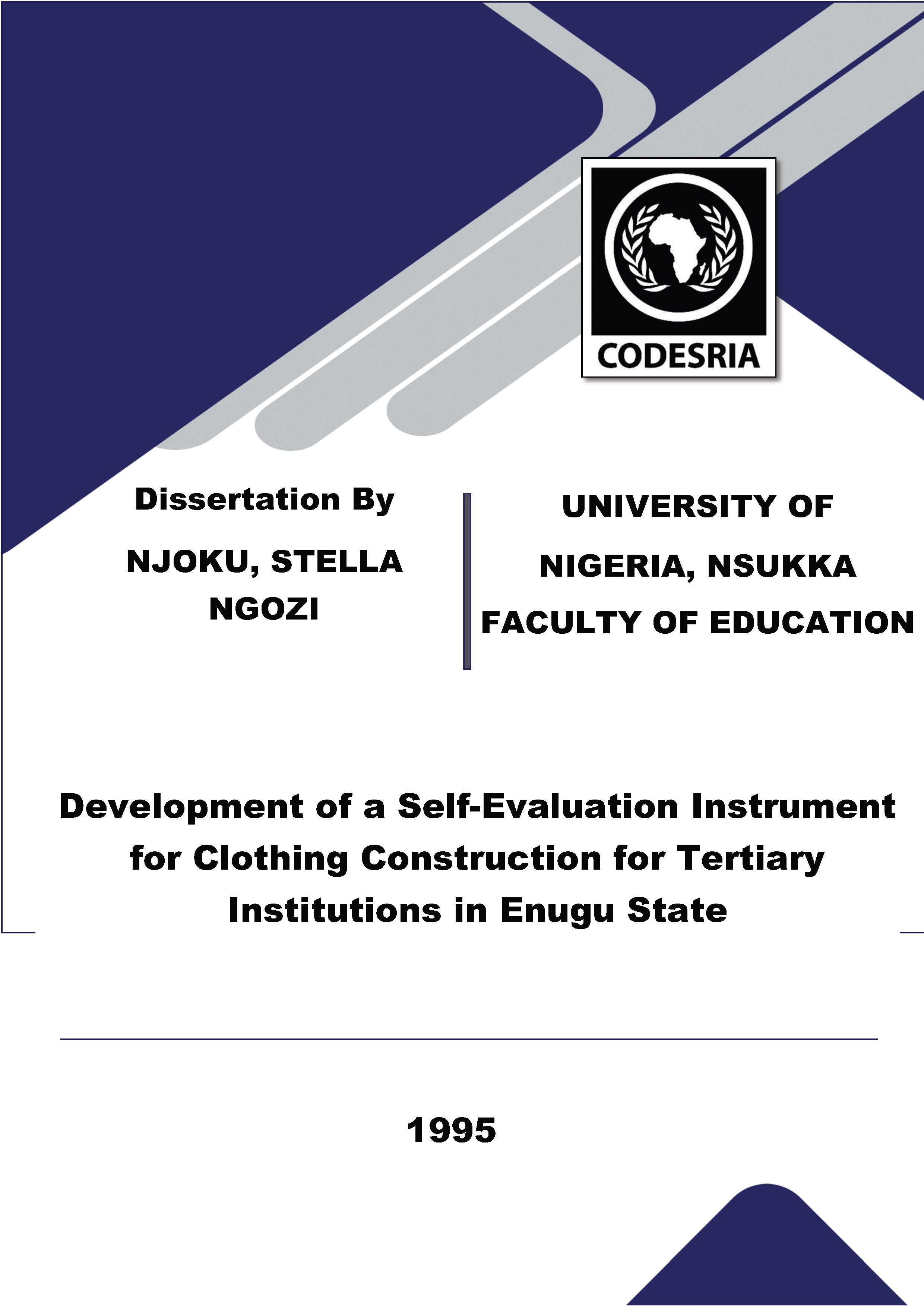Development of a Self-Evaluation Instrument for Clothing Construction for Tertiary Institutions in Enugu State
Keywords:
Clothing, evaluation, skills development, service industry, home economics, data analysis, auto-evaluation, Enugu StateSynopsis
The purpose of this study was to develop a self-evaluation instrument which students in tertiary institutions can use to
evaluate basic clothing construction skills and also to ascertain any problem(s) which students encounter with the use of the
manual. A null hypothesis that there would be no significant difference in the mean ratings of the clothing skills by the
subjects and the teacher/researcher at 0.05 level of significance was postulated. The population comprised students in the Home Economics area in tertiary institutions in Enugu State. Purposive sampling technique was utilized in selecting the
300-level students offering clothing construction courses. A sixty-eight item basic clothing construction techniques (BCLOTS)
self-evaluation rating scale was the instrument used for the study. The instrument was validated by clothing lecturers and
pilot tested on ten students. The instrument was further administered to the 300-level clothing students for\ selfevaluation
of their clothing skills. !1eans, standard deviation, t-test and percentages were employed in the analysis of data. The findings include the following: self-evaluation instrument which students offering clothing construction courses in tertiary
institutions can use to evaluate their clothing skills; students• self-evaluation of their clothing skills compared well with
Downloads
References
Adegbite, P,O, (1982), Textile Technology as a career, Nigerian Journal of Technical Education, _! (2).
Amar, L. (1981). "Evaluation in Home Economics" in Report of National Home Economics Workshop, Jos 1980. Lagos: Federal ·Government Press.
Anyakoha, E,U. (1982). The In-service needs of post-primary school teachers in Home Economics (Clothing and Textiles) in Anambra State. Unpublished M,Ed Thesis, Department of Vocational Teacher Education, University of Nigeria, Anyakoha. E,U. (1986), Identification of Essential traits and tasks of selected clothing occupations for senior secondary school students in Anambra and Imo states, Nigeria. Unpublished
Doctoral Dissertation, Department of Vocational Teacher Education, University of Nigeria.
Anyakoha, E.U. and Njoku, S,N. (1992). Enhancing self-evaluation in clothing education for skill development in Anyakoha and Oranu (eds,), Vocational/technical education and Manpower development. Nigerian Vocational Association, PP• 82-88, Atienza, M-F· (1975), Effective Teaching of Home Economics.Phillipines: R,P. Garcia Publishing Co,
Athearn, M.E. (1970). comparison of two teaching techniques in a beginning textile unit: Programmed instruction and classroom lecture. Master's Thesis. University of Tennessee, Knoxville, Bane, A. (1974). Tailoring, New York: McGraw Hill Inc.
Blackenship, M,L, and Moerchen, B.O·, (1979). Home Economics Education, Boston: Houghton Mifflin co.
Bloom, B,S. (1971). Handbook on formative and summative evaluation of student. New York:' McGraw Hill Inc. Broadfoot, P.M. motlvation.
(1979). A study of the role of assessment in Education Reviewo Center for Vocational Education (1977). Module D-4: Assess student performance skills. Georgia: American Association for vocational Tnstructio~'il materials.






